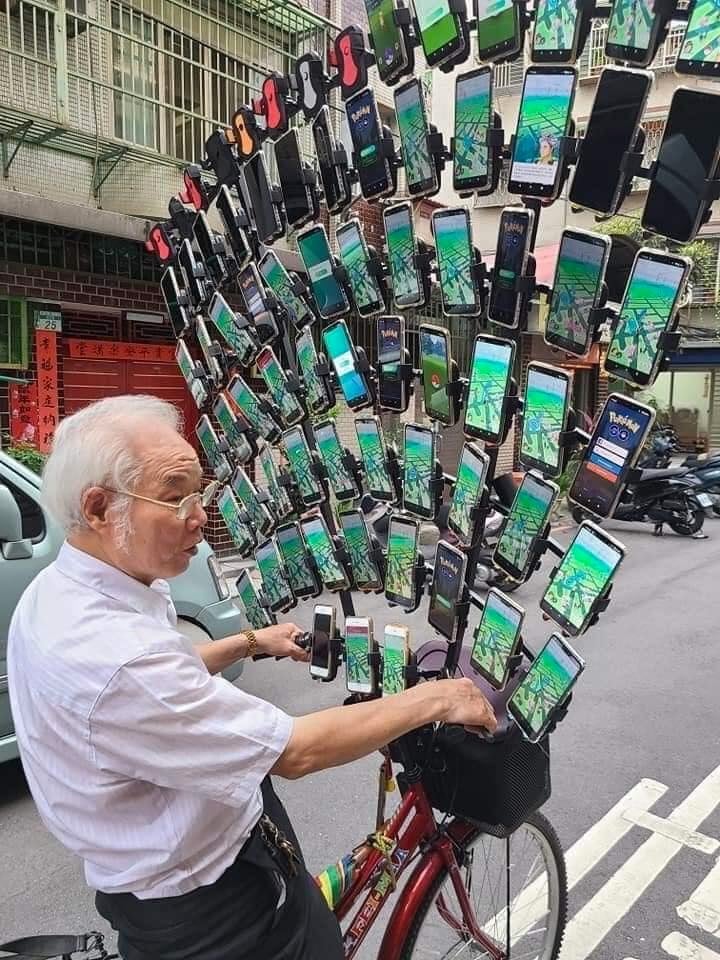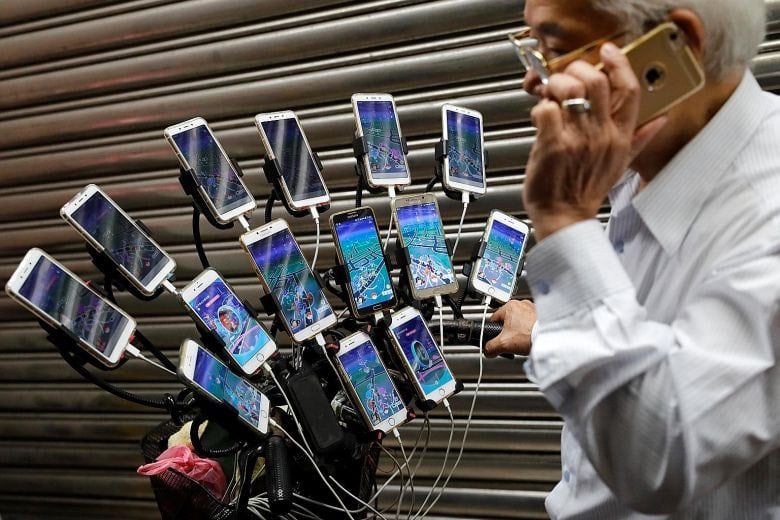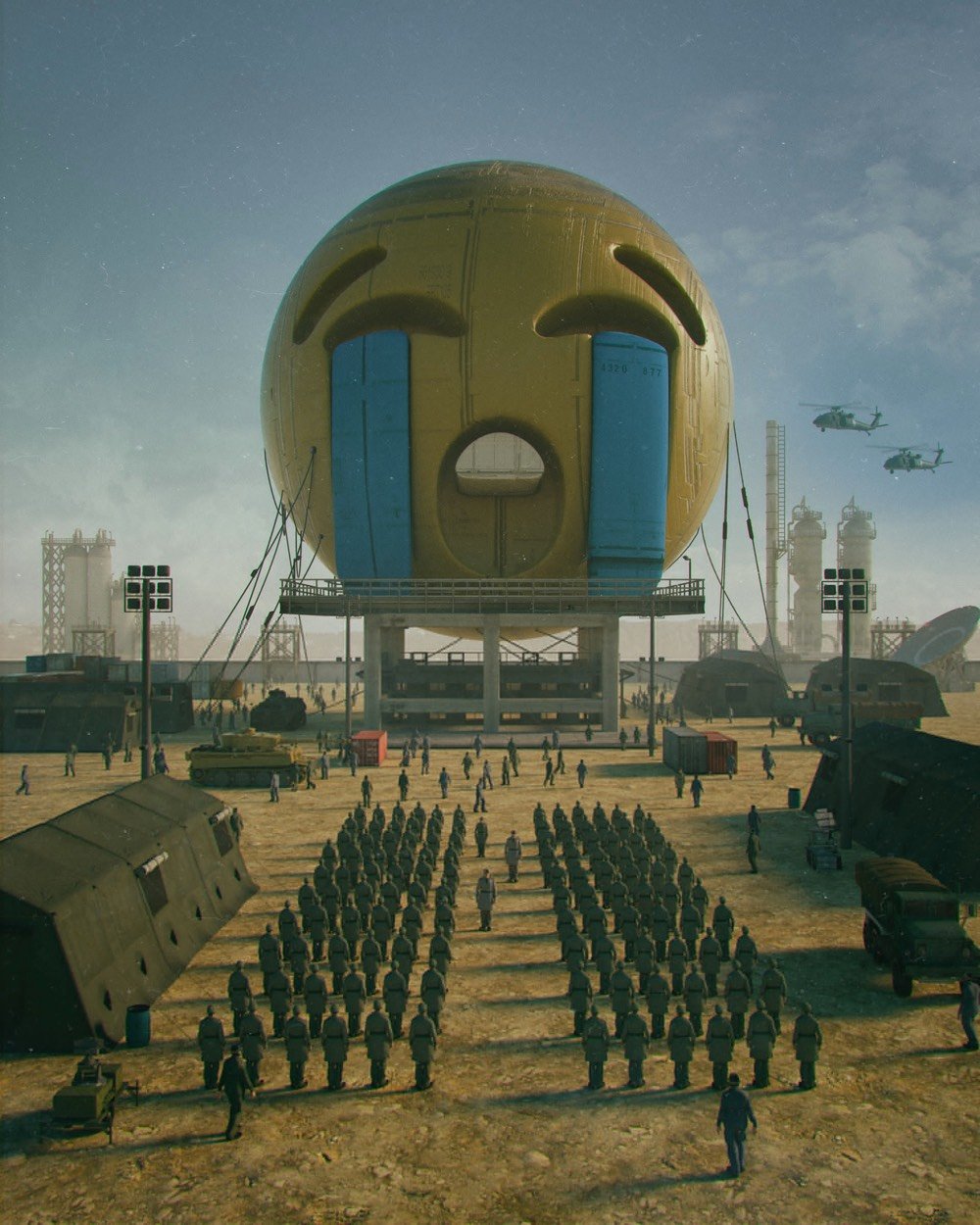kottke.org posts about Pokemon
Chen San-yuan, a Taiwanese man who has been nicknamed Pokémon Grandpa, has affixed an array of 64 phones to his bike in order to play dozens of simultaneous games of Pokémon Go.

When I first posted about Chen back in Nov 2018, his mere 15-phone setup looked like this:

How much bigger can he go? He’s averaging adding ~2.5 phones per month to the array (assuming linear growth, which I’m not sure we can, but let’s start there) so he could reach 100 phones by August 2021. Stay tuned!
For more than 11 years for a series he calls Everydays, Mike Winkelmann (aka Beeple) has been making a daily picture. As you might expect from the breakneck pace, some of them aren’t that interesting (there’s a lot of juvenile stuff here tbh), but my favorite ones are the Black Mirror-ish with decayed or repurposed pop cultural references.




You can view more of Winkelmann’s work on Behance, Tumblr, and his website. (via dense discovery)
Kids can remember hundreds of Pokemon characters but very few animals. The solution? The Phylomon Project is an open source initiative aiming to make Pokemon-type cards for actual animals.
Update: Xeko is an “eco-adventure game” that features Pokemon-like cards for hundreds of real animals. (thx, josh)
Crinoids, or sea lilies, are marine animals that resemble plants. Unlike its garden namesake, the sea lily doesn’t stay still, but creeps along to avoid becoming prey for sea urchins and other predators.
It seems they’ve also developed the ability to “shed” their stalk-like appendages.
“It’s the lizard’s tail strategy,” said Baumiller, who is also a curator in the UM Museum of Paleontology. “The sea lily just leaves the stalk end behind. The sea urchin is preoccupied going after that, and the sea lily crawls away.” And the speed at which they move—-three to four centimeters per second—-suggests that “in a race with a sea urchin, the sea lily would probably win.”
When on the move, they resemble graceful spiders in a hurry.
Crinoids are also the state fossil of Missouri, and inspired the design of Pokemon characters Lileep and Cradily.
This is perhaps the most succinct explanation of the current financial crisis I had read: The Financial Crisis, as Explained to My Fourteen-Year-Old Sister.
Kevin: Imagine that I let you borrow $50, but in exchange for my generosity, you promise to pay me back the $50 with an extra $10 in interest. To make sure you pay me back, I take your Charizard Pokémon card as collateral.
Olivia: Kevin, I don’t play Pokémon anymore.
Kevin: I’m getting to that. Let’s say that the Charizard is worth $50, so in case you decide to not return my money, at least I’ll have something that’s worth what I loaned out.
Olivia: Okay.
Kevin: But one day, people realize that Pokémon is stupid and everyone decides that the cards are overvalued. That’s right — everybody turned twelve on the same day! Now your Charizard is only worth, say, $25.
The only thing that’s missing is the part of the explanation where the parents swoop in and pay Kevin full value for that Pokémon card, which allows him to keep lending money in exchange for cardboard rectangles.











Stay Connected